
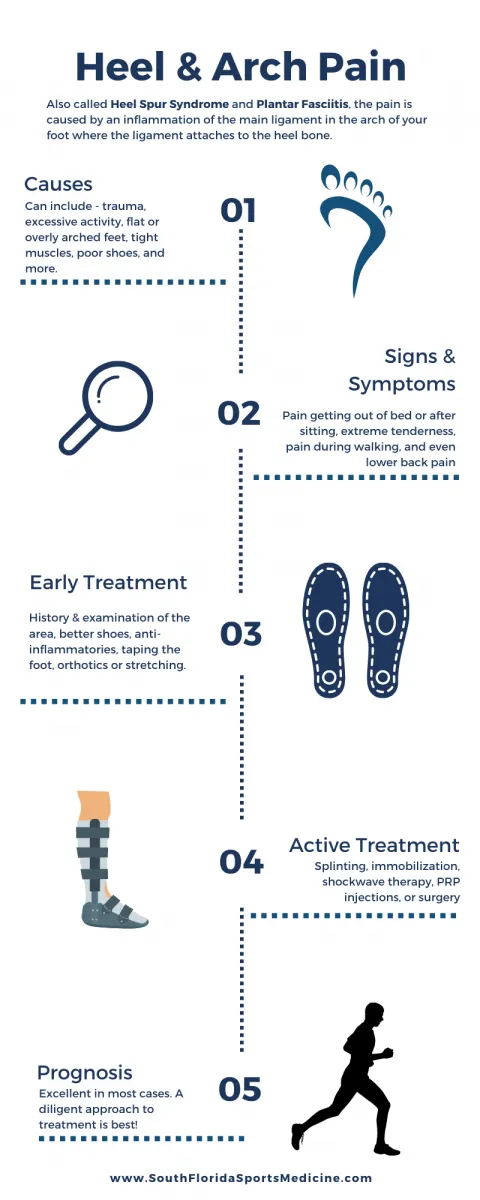
“HEEL SPUR SYNDROME” AND PLANTAR FASCIITIS
By: Robert H. Sheinberg, D.P.M., D.A.B.P.S., F.A.C.F.A.S.
PROBLEM:
- An inflammation of the main ligament in the arch where it attaches to the heel bone and supports the foot.
CAUSES:
- Excessive activity over a short period of time.
- Flat or high arched feet.
- Tight muscles, especially the calf and hamstrings.
- Poor shoe gear or walking barefoot for prolonged periods of time.
SYMPTOMS:
- Pain first thing in the morning when getting out of bed and putting the foot down to the ground. With walking the pain usually diminishes.
- Pain after sitting for a prolonged period of time or getting out of a car and starting to walk.
- Occasionally burning, numbness, shooting or tingling into the heel.
- Extreme tenderness to touch the heel or arch region.
- Commonly associated with lower back pain.
TREATMENT:
- Avoid going barefooted and good supportive shoe wear.
- Anti-inflammatory medications to reduce the inflammation.
- Taping the foot to support it and give immediate relief.
- Custom molded orthotic (shoe insert) to permanently support the foot and prevent reinjury.
- Frequent stretching of the calf and hamstring muscles to improve overall flexibility.
- Splinting the foot at night to stretch the muscle in the back of the leg.
- Occasionally immobilization in a cast or a boot to completely rest the foot.
- Shockwave therapy if pain persists.
- Surgery is a last resort to release a small portion of the ligament from the heel.
Intraoperative video of Endoscopic Plantar Fasciotomy
Pictures during an endoscopic plantar fasciotomy or release. The medial band of the fascia is visualized on the left. The two right pics are during the release of the band.

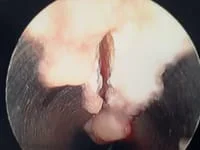
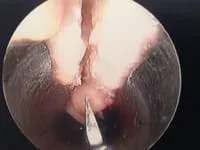
More Intraop Pics of Endoscopic Plantar Fascia Release. The thickened fascia is seen on the left. The Blade is cutting through the fascia in the center pic and confirmation of complete release of that portion of the ligament is noted as we can see the intrinsic muscles after release.


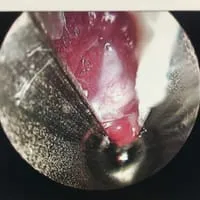
Lateral X-ray with plantar calcaneal Heel Spur

RI of Severe Plantar Fasciitis of the Medial and Central Band. The bands of the plantar fascia are thickened and there is swelling around the soft tissue of where the fascia inserts in the heel as well in the heel bone itself. On this MRI, the white is inflammation.The arrow points to the thickend and inflammed ligament.
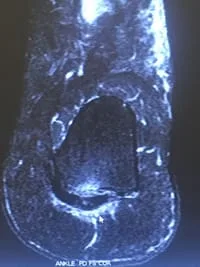
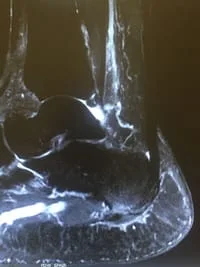
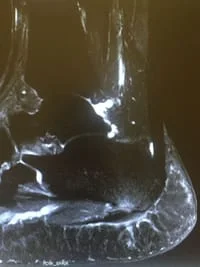
“HEEL SPUR SYNDROME” AND PLANTAR FASCIITIS
By: Robert H. Sheinberg, D.P.M., D.A.B.P.S., F.A.C.F.A.S.
PROBLEM:
- An inflammation of the main ligament in the arch where it attaches to the heel bone and supports the foot.
CAUSES:
- Excessive activity over a short period of time.
- Flat or high arched feet.
- Tight muscles, especially the calf and hamstrings.
- Poor shoe gear or walking barefoot for prolonged periods of time.
SYMPTOMS:
- Pain first thing in the morning when getting out of bed and putting the foot down to the ground. With walking the pain usually diminishes.
- Pain after sitting for a prolonged period of time or getting out of a car and starting to walk.
- Occasionally burning, numbness, shooting or tingling into the heel.
- Extreme tenderness to touch the heel or arch region.
- Commonly associated with lower back pain.
TREATMENT:
- Avoid going barefooted and good supportive shoe wear.
- Anti-inflammatory medications to reduce the inflammation.
- Taping the foot to support it and give immediate relief.
- Custom molded orthotic (shoe insert) to permanently support the foot and prevent reinjury.
- Frequent stretching of the calf and hamstring muscles to improve overall flexibility.
- Splinting the foot at night to stretch the muscle in the back of the leg.
- Occasionally immobilization in a cast or a boot to completely rest the foot.
- Shockwave therapy if pain persists.
- Surgery is a last resort to release a small portion of the ligament from the heel.

